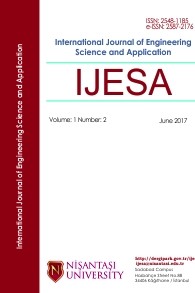Numerical analysis of the Temperature Distribution in Centrifugal Casting
Numerical analysis of the Temperature Distribution in Centrifugal Casting
___
- [1] Ibhadode, A. O. A. Introduction to Manufacturing Technology, TETFUND Edition, Ambik publishers, Benin City, Nigeria, 2014
- [2] Shaliesh, P., Praveen Kumar, B., Vijaya Kumar, K. and Nagendra, A. Determination of the Solidification Time of Al-7%Si Alloy during Centrifugal Casting. International Journal of Current Engineering and Technology, vol. 2, pp. 226-229, 2014.
- [3] Degarmo, E.P., Black, J.T. and Kohser R.A, Materials and Processes in Manufacturing, 9th Edition, Wiley Inc, USA, 2003.
- [4] Shaha, S.K., Haque, M.M., Simulation of Heat Flow in Computational Method and Its Verification on the Structure and Property of Gray Cast Iron, American Journal of Applied Sciences, 7(6), p. 795-799, 2010.
- [5] Campbell, J. “Casting”, Butterworth-Heinemann, Oxford, 1991.
- [6] Kamlesh (2001): Ph.D. Thesis, BVM Engineering College, Gujarat, India, p. 35.
- [7] Anjo, V. Numerical Simulation of Steady State Conduction Heat Transfer during the Solidification of Aluminum Casting in Green Sand Mould. Leonardo Electronic Journal of Practices and Technologies, vol. 20, pp. 15-24, 2012.
- [8] Kaschnitz, Z. Numerical simulation of centrifugal casting of pipes IOP Conf. Series: Materials Science and Engineering 33012031, 2012.
- [9] Raju, P.S.S. and Mehrotra, S.P., (2000). Mater. Trans. JIM, vol. 41, pp. 1626–1635.
- ISSN: 2548-1185
- Başlangıç: 2016
- Yayıncı: Nişantaşı Üniversitesi
Virtual Group Control Algorithm for Modular Multilevel Converter
Chan-ki KİM, Soo-yeon SİM, Chang-hwan PARK, Jang-mok KİM
Activated Flux TIG Welding Of Non-Ferrous Metals
Ahmet İrfan YÜKLER, Memduh KURTULMUS
A Survey of Accelerometer-Based Techniques for Road Anomalies Detection and Characterization
Habeeb BELLO SALAU, Adeiza James ONUMANYİ, Abiodun Musa AİBİNU, Elizabeth Nonye ONWUKA, Jaye Jeheosphart DUKİYA, Henry OHİZE
Numerical analysis of the Temperature Distribution in Centrifugal Casting
